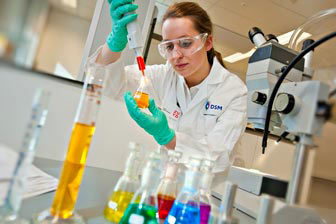
Economic strength
Sittard-Geleen is in the centre of Limburg and very close to both Belgium and Germany, making it extremely favourably located in a high-ranking technological region (the Eindhoven-Liège-Aachen triangle).
Economic pillars
Sittard-Geleen has around 95,000 residents, and more jobs than the local working population can fill. The city has some 4500 companies and institutions that provide work for around 50,000 people. A relatively high proportion of these jobs are in industry and construction, along with an average number in commerce and services. Economic activities here take place on two levels: the international level, with pillars being fields like chemistry, the automotive sector, andlogistics, and the regional/local level, with the SME sector being the major driver here. Construction, retail/dining, care, professional services, and other services are strongly represented in this sector.
Growth engine
Sittard-Geleen is a major centre for innovation in the south-east. Chemelot Campus is a growth engine that has a major impact on the Dutch economy. It is a catalyst for the establishment of new businesses that reinforce the economic structure. Brightlands Chemelot Campus is the leading site in the Euregio for enterprise, teaching, and research in CHEMaterials. It is a location that attracts both industry and leading researchers as a place to work, and a place where students in the field are eager to come for their first professional projects.
Logistic hub
Sittard-Geleen is an important logistic nexus in the region, thanks to its location on the national and international network of road, rail, and waterway connections and the proximity of Maastricht Aachen Airport. For road transport purposes, Sittard-Geleen is advantageously located for both the A2 (North-South axis) and the A76 (East-West axis). Because of the close-knit geography of the national borders, the transport axes of road, rail, water, and utilities in Sittard-Geleen are very close together, allowing enterprises to benefit from multimodal junctions. One good example is the Junction North, where the Barge terminal facilitates transshipment from water to road and rail, and vice versa.
